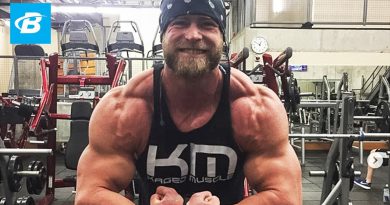Top Ten Benefits of Core Exercises
When it comes to total lifetime fitness, core exercises are just about the best thing you can do for yourself. The results are immediate and long-lasting. Core exercises have profound benefits for both men and women, at all levels of training and experience.
Core training is a relatively new term, popularized within the last 15 years. Yet, core training itself has been an essential part of the training of every gymnast, ballet dancer, and football player since the beginnings of time. No one called it “core training” back in the day.
Your football coach or ballet instructor said “do this” and you did that. You did squat thrusts and jumping jacks and push-ups if you were a football player, or you did pliés and ronds de jambes and ports de bras if you were a ballet dancer. No one knew that the deepest part of their athletic exercise routines were actually training a critical part of their body called the “core”.
Today, the deep value of core training is well-known to the professional physical fitness community. And core exercises are an important component of fitness for every person engaged in the pursuit of health and wellness.
Here are the Top Ten Benefits of Core Exercises –
1. It’s good for you! Core exercises train your deep abdominal muscles – the main one is called the transversus abdominis. You can think of your transversus abdominis as your internal weight belt. It’s a very deep muscle that surrounds your entire waist, supporting all your abdominal structures including your lower back.
2. Looking good. Of course – this is why we exercise! Well, mostly why we exercise. 🙂 Core training flattens your abs better and faster than any other abdominal workout.
3. Core training is the missing piece of most exercise programs. Most people do abdominal exercises as part of their regular routines. These are important, and yet abdominal exercises per se focus on the superficial abdominal muscles – primarily the rectus abdominis. What’s needed are exercises that specifically target the transversus abdominis (TVA) – your body’s weight belt. This muscle is your deepest muscular layer and is most effectively trained using core routines.
4. Lower back stabilization. A strong and healthy lower back requires a strong and healthy group of core muscles – the TVA, multifidus, erector spinae, longissimus thoracis, rectus abdominis, and internal and external obliques. A strong core provides weight-bearing support to the lower back, freeing your spinal vertebras, joints, and muscles to do what they were designed to do – move your body around in space.
5. Your body gets much smarter! Core training provides remarkable unexpected benefits, including improved balance and coordination. Core training creates more and better links between your brain – specifically your cerebellum – and your body. The cerebellum is responsible for muscular coordination, balance, and positional awareness – proprioception – your body’s awareness of its positioning in three-dimensional space. So core fitness means your brain is fit, too, and your body’s own intelligence goes up very quickly.
6. Improved flexibility. Another unexpected benefit of core fitness. Improved flexibility is the natural result of improved lower back stabilization. A strong group of core muscles takes weight-bearing pressure off your lower back, removing an ongoing, daily source of lower-back muscular stress and strain. These muscles and ligaments are freed-up to go through their entire ranges of motion, providing improved natural mobility and flexibility.
7. Improved respiration and lung capacity. The TVA is directly connected to the diaphragm. When the core muscles are well-trained and working properly, your ability to breathe in fully and breathe out fully is greatly improved. More air means more oxygen – the performance of all your body systems is upgraded as a result. Pretty remarkable.
8. Reduced occurrence of lower back pain. Most of us have had some kind of lower back trouble here and there. Most of these lower back problems result from bearing too much or too sudden weight in the lower back. A strong set of core muscles helps prevent or minimize such damage by providing more a efficient weight-bearing mechanism. Your back muscles and ligaments are not primarily designed to bear weight. Their primary function is to move your body around in three-dimensional space. A strong core allows for more normal spinal function and lower back problems are reduced.
9. Improved physical strength. In the old days you’d carry around a weight belt when you worked out at the gym. You’d put on the weight belt when you were doing squats, deadlifts, or shoulder presses with a barbell. The belt provided stabilization and supported your lower back, allowing you to lift heavier weights and reduce the risk of injury. In those days people didn’t know about core training. With core exercises, you strengthen your own internal weight belt. The TVA and other core muscles even do a better job than the old leather weight belts. They’re a natural part of your body and know what they’re supposed to do. All you need to do is keep these muscles fit and well-trained.
10. More fun with running, cycling, surfing, and skiing. Basically, any sport that requires both aerobic performance and flexibility is improved with core training. Core exercises enhance your respiratory capacity and your balance, coordination, and flexibility. The result is upgraded athletic performance – you have more stamina and your sport-specific skills improve. Core training is literally a one-stop shop for fitness.
Top Ten Benefits of Core Exercises by David Lemberg




